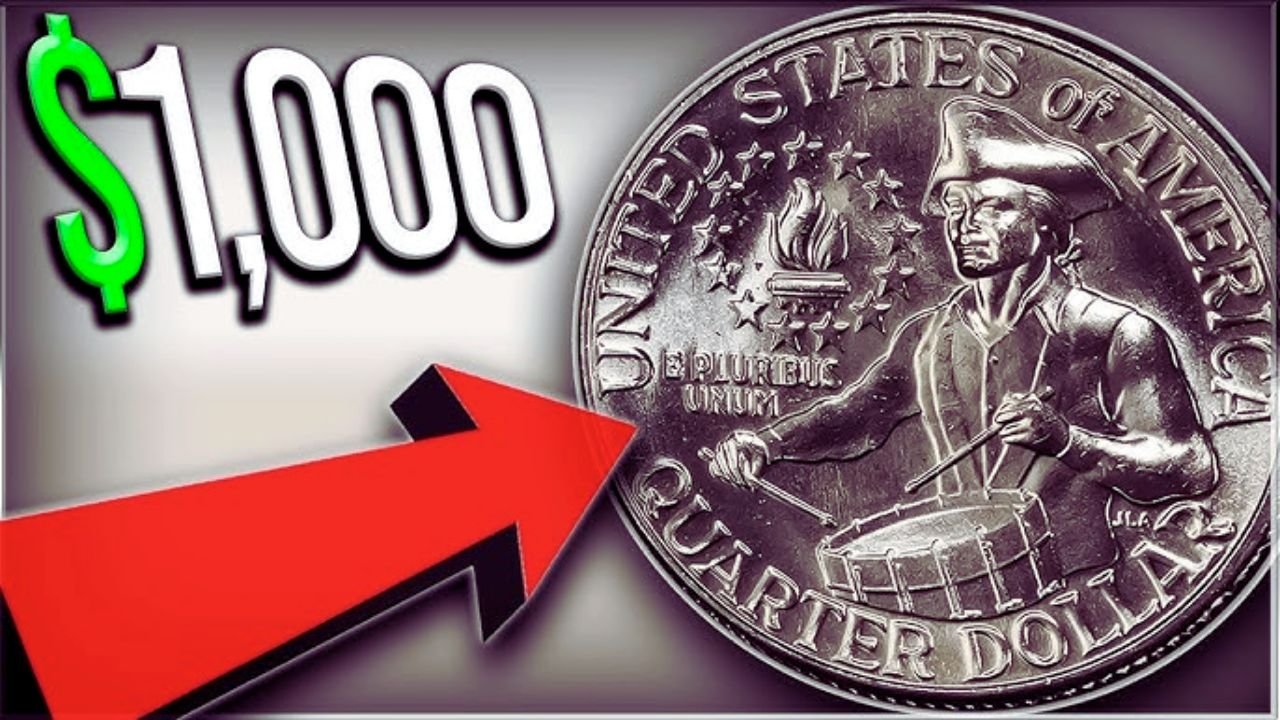What if a quarter in your pocket was worth $250 million? It’s not a fantasy—ten rare Bicentennial quarters, each valued at this massive amount, are still floating around in circulation. Minted in 1976 to celebrate America’s 200th anniversary, these coins have special features that make them a collector’s treasure. Let’s look at why these quarters are so valuable, what makes them unique, and how you can find one.
Why These Quarters Are Worth Millions
Bicentennial quarters were made to honor America’s birthday, with a drummer boy design on the back. While millions were produced, a handful have rare traits like minting errors or unique materials that make them incredibly valuable. Some were struck in 40% silver instead of the usual copper-nickel, and others have mistakes like doubled designs or missing mint marks. These quirks make them so rare that collectors are ready to pay $250 million for each one.
The Ten Rare Quarters to Hunt For
Here’s a list of the ten Bicentennial quarters that could change your life:
- 1976-S Silver Double-Die Obverse: The front design is doubled, minted in silver.
- 1976 No Mint Mark: No mint mark at all, a super rare error.
- 1976-S Proof No S: A proof coin missing the “S” mint mark.
- 1976 Off-Center Strike: The design is shifted off-center by 50% or more.
- 1976-D Silver Reverse Error: Doubling on the drummer boy side.
- 1976-D Struck on Dime Planchet: Quarter design on a smaller dime blank.
- 1976-S Test Alloy: Made with an experimental metal mix.
- 1976 Broadstrike: Struck without a collar, making it wider.
- 1976-S Wrong Planchet: Minted on a non-standard metal blank.
- 1976-D Double-Die Reverse: Doubling error on the back, Denver mint.
Each of these quarters, if in good shape, could sell for $250 million at auction because of their rarity and appeal to collectors.
How to Spot These Coins
You don’t need to be an expert to find these quarters, but you need to know what to look for. Check the date (1976), mint mark (a small “D” or “S” near the date, or none), and any odd features like doubled designs or off-center strikes. A magnifying glass can help you see small details. Here’s a table with key details to help you identify them:
| Quarter Type | Year | Key Feature | Estimated Value |
|---|---|---|---|
| Silver Double-Die | 1976-S | Doubled front | $250M |
| No Mint Mark | 1976 | Missing mark | $250M |
| Proof No S | 1976-S | No “S” mark | $250M |
| Off-Center Strike | 1976 | Shifted design | $250M |
| Silver Reverse Error | 1976-D | Doubled back | $250M |
| Struck on Dime | 1976-D | Dime blank | $250M |
| Test Alloy | 1976-S | Unique metal | $250M |
| Broadstrike | 1976 | Wider coin | $250M |
| Wrong Planchet | 1976-S | Non-standard blank | $250M |
| Double-Die Reverse | 1976-D | Doubled back | $250M |
Where You Might Find Them
These quarters could be anywhere—your wallet, a coin roll from the bank, or an old piggy bank. Look through change from stores, vending machines, or flea markets. Coin collectors often check bank rolls or estate sales for hidden gems. If you find a suspicious quarter, don’t clean it, as that can lower its value. Take it to a professional coin dealer or appraiser to confirm if it’s one of the rare ones.
What to Do If You Find a Treasure
If you think you’ve found one of these quarters, handle it carefully. A certified appraiser can verify its authenticity and connect you with auction houses or buyers. These coins can fetch millions at major auctions, so it’s worth getting it checked. Store the coin in a protective holder to keep it safe. With a sharp eye and some luck, you could turn everyday change into a fortune.
The search for these Bicentennial quarters is like a modern-day treasure hunt. Next time you get a quarter, give it a quick look—you might be holding $250 million in your hand.
